deployment of the PLA Navy ships in the - Information Resource ...
deployment of the PLA Navy ships in the - Information Resource ...
deployment of the PLA Navy ships in the - Information Resource ...
You also want an ePaper? Increase the reach of your titles
YUMPU automatically turns print PDFs into web optimized ePapers that Google loves.
FFFFFFFFFFFFFFFFFFF<br />
wealthiest men <strong>in</strong> <strong>the</strong> world , shar<strong>in</strong>g <strong>the</strong> podium with<br />
<strong>the</strong>ir countrymen who constitute forty percent <strong>of</strong> <strong>the</strong><br />
world’s hungry. Changes <strong>in</strong> India are <strong>the</strong> result <strong>of</strong><br />
many factors, some more tangible or visible than<br />
o<strong>the</strong>rs—<strong>of</strong>ten hav<strong>in</strong>g much to do with <strong>the</strong> persistence<br />
<strong>of</strong> <strong>the</strong> past and fragility <strong>of</strong> <strong>the</strong> future, about modest<br />
victories and difficult challenges. This is what Shashi<br />
Tharoor has attempted to capture <strong>in</strong> his eclectic and<br />
whimsical compilation <strong>of</strong> “Reflections on India.”<br />
The volume spans <strong>the</strong> topics <strong>of</strong> history, culture,<br />
society and sports, with occasional thoughts on<br />
economy and bus<strong>in</strong>ess. The book is divided <strong>in</strong>to six<br />
parts, each <strong>of</strong> which focuses on a very broad <strong>the</strong>me.<br />
However, <strong>in</strong> spite <strong>of</strong> this focus, each chapter covers<br />
subjects at times unrelated to one ano<strong>the</strong>r. For<br />
<strong>in</strong>stance, <strong>in</strong> his chapter “India at Work and Play” Mr.<br />
Tharoor writes about Gandhi, democracy, Indian<br />
holidays, his Bombay childhood, <strong>the</strong> sari, police,<br />
literacy, renam<strong>in</strong>g <strong>of</strong> Indian cities and India’s urban<br />
heritage. In o<strong>the</strong>r chapters he tackles not so adeptly,<br />
both serious and light topics: H<strong>in</strong>duism and<br />
nationalism, cricket, Bollywood and politicians,<br />
poverty, relations with Pakistan, Indian Muslims, Indian<br />
women, f<strong>in</strong>ish<strong>in</strong>g up with a glossary, “A to Z <strong>of</strong> Be<strong>in</strong>g<br />
Indian.”<br />
All <strong>the</strong> essays, however, fall roughly <strong>in</strong>to one <strong>of</strong><br />
<strong>the</strong> three categories: memoirs, essays on<br />
development and <strong>in</strong>ternational relations, and pieces<br />
on idiosyncratic subjects, like <strong>the</strong> decl<strong>in</strong>e <strong>in</strong> <strong>the</strong><br />
popularity <strong>of</strong> <strong>the</strong> sari, Indian police, name spell<strong>in</strong>g and<br />
superstitions, Indian <strong>in</strong>telligence services, etc. Essays<br />
<strong>in</strong> <strong>the</strong> latter category make for an <strong>in</strong>terest<strong>in</strong>g read, not<br />
least because <strong>the</strong>y are less familiar and rare to come<br />
across <strong>in</strong> <strong>the</strong> press. However, when Mr. Tharoor—<br />
perhaps as a result <strong>of</strong> his background as a former<br />
senior United Nations <strong>of</strong>ficial—delves <strong>in</strong>to<br />
<strong>in</strong>ternational relations <strong>the</strong>ory, or topics widely covered<br />
by <strong>the</strong> media, <strong>the</strong> tone becomes somewhat dry and<br />
br<strong>in</strong>gs to m<strong>in</strong>d a policy memo. These few didactic<br />
chapters aside, <strong>the</strong> author’s knowledge <strong>of</strong> Indian<br />
history and domestic politics, re<strong>in</strong>forced by his<br />
pr<strong>of</strong>ound concern for <strong>the</strong> country, personal<br />
experiences and literary skill, makes for an engag<strong>in</strong>g<br />
read.<br />
“Indians Who Made My India” is perhaps my<br />
favorite chapter, thanks to <strong>the</strong> Mr. Tharoor’s<br />
compassionate and mov<strong>in</strong>g account <strong>of</strong> <strong>the</strong> lives <strong>of</strong><br />
FFFFFFFFF<br />
SEPTEMBER 2010<br />
NAVAL DESPATCH<br />
India’s prom<strong>in</strong>ent personages as well as <strong>the</strong> people<br />
dear to him, <strong>in</strong>clud<strong>in</strong>g his family and friends. The<br />
author dusts <strong>of</strong>f <strong>the</strong> portraits <strong>of</strong> frequently forgotten<br />
or misunderstood political and cultural icons—<br />
Krishna Menon, Sr<strong>in</strong>ivasa Ramanujan, M.F. Husa<strong>in</strong>,<br />
Amartya Sen and a few o<strong>the</strong>rs. In this chapter, he also<br />
candidly writes about his friends’ accomplishments<br />
and <strong>the</strong>ir tragedies, render<strong>in</strong>g a more <strong>in</strong>timate picture<br />
<strong>of</strong> his country’s global citizens.<br />
Judg<strong>in</strong>g from <strong>the</strong> book’s subtitle, Mr. Tharoor’s<br />
selected topics are supposed to illustrate aspects <strong>of</strong><br />
India’s chang<strong>in</strong>g position as a power to be contended<br />
with on <strong>the</strong> global stage. On one level, most economic<br />
<strong>in</strong>dicators—<strong>the</strong> Indian economy has grown at <strong>the</strong><br />
average rate <strong>of</strong> 7% <strong>in</strong> <strong>the</strong> past few years and poverty<br />
dropped by 10% between 1991 and 2001—may give<br />
credence to <strong>the</strong> author’s optimistic outlook <strong>of</strong> India<br />
turn<strong>in</strong>g <strong>in</strong>to ano<strong>the</strong>r Asian tiger. But on ano<strong>the</strong>r level,<br />
a portrayal <strong>of</strong> India as an emerg<strong>in</strong>g power is too<br />
premature. Although <strong>the</strong> author mentions India’s<br />
many political, economic and social challenges <strong>in</strong> <strong>the</strong><br />
“Dangers to India’s Future” chapter, he glosses over<br />
<strong>the</strong> gravity <strong>of</strong> certa<strong>in</strong> problems. He understates <strong>the</strong><br />
Herculean effort required from <strong>the</strong> government, civil<br />
society and <strong>the</strong> aam admi, <strong>the</strong> common man, to meet<br />
<strong>the</strong> challenges that India faces on its way to creat<strong>in</strong>g<br />
broad-based economic prosperity and a tolerant<br />
society.<br />
Problems such as demographic pressures,<br />
communal violence, sectarianism, a weak judiciary,<br />
absence <strong>of</strong> civic culture and overall apathy, are just a<br />
few <strong>of</strong> <strong>the</strong> daunt<strong>in</strong>g challenges India’s government<br />
and its people have to overcome. If <strong>the</strong>se issues aren’t<br />
tackled, <strong>the</strong> <strong>in</strong>equity gap and sectarianism may tear<br />
India apart. Mr Tharoor’s scenario <strong>of</strong> <strong>the</strong> ris<strong>in</strong>g India<br />
might be rewritten by India’s desperate masses tak<strong>in</strong>g<br />
th<strong>in</strong>gs <strong>in</strong>to <strong>the</strong>ir own hands. The Naxalite movement,<br />
its supra-state status and its resort to spontaneous<br />
tribunals <strong>in</strong> search <strong>of</strong> justice, doesn’t make this<br />
scenario that implausible.<br />
The author, however, rightly po<strong>in</strong>ts out that <strong>in</strong><br />
order to leverage India’s s<strong>of</strong>t power—its attractiveness<br />
to <strong>the</strong> outside world—Indians “must ensure that <strong>the</strong>y<br />
do enough to keep <strong>the</strong>ir people healthy, well-fed, and<br />
secure not just from jihadi terrorism but from <strong>the</strong> daily<br />
terror <strong>of</strong> poverty, hunger, and ill health.” Moreover, <strong>in</strong><br />
Mr. Tharoor’s op<strong>in</strong>ion, <strong>the</strong> cultural pluralism and<br />
FFFFFFFFF 57




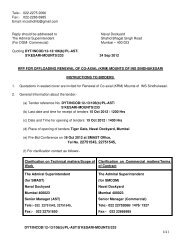
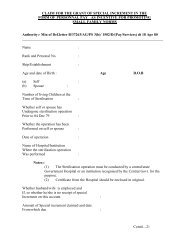
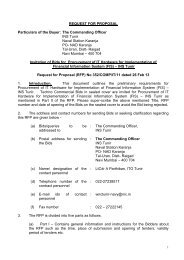
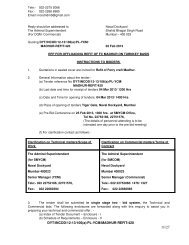
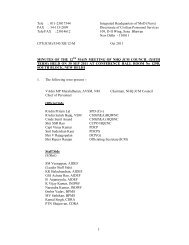
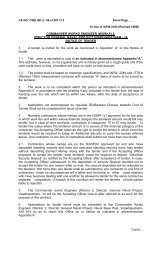

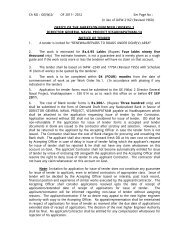
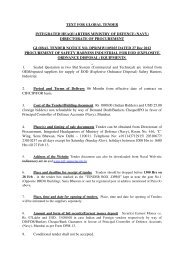
![DGNP[V] - Irfc-nausena.nic.in](https://img.yumpu.com/23509938/1/158x260/dgnpv-irfc-nausenanicin.jpg?quality=85)



